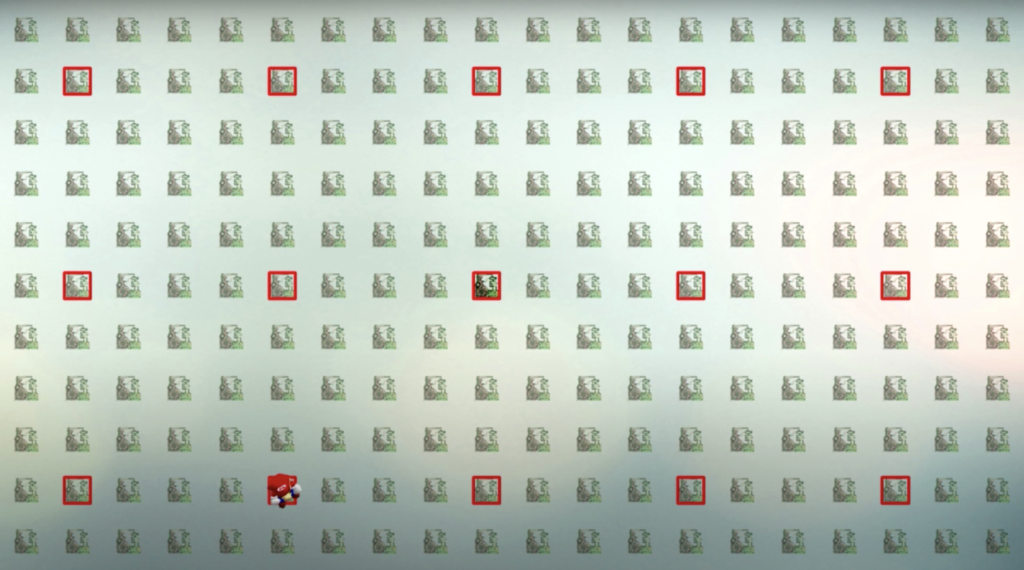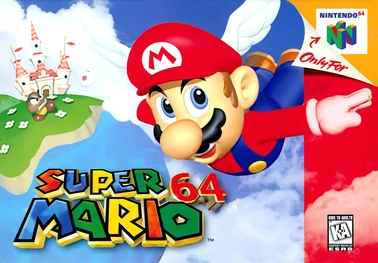Mario is one of the biggest names to ever grace the videogame stage. The Mario franchise has generated over 200 games to date, under various series including Mario Kart, Mario Party, Paper Mario, and Super Mario. Super Mario is the best-selling franchise involving the red-hatted plumber, and has released 23 games since its inception in 19851. The franchise began as a 2D scrawler, but in 1996 transitioned to a 3D, open-world design with the release of Super Mario 64. SM64 was released as a launch game for the Nintendo 64 console and has since been praised for its revolutionary impact on the 3D platformer genre. The game is also known for its impressive speedrunning community, which exemplifies the game’s ability to evoke explorative joy.
SM64 was not the first 3D platformer ever released, but is largely responsible for the popularization of the genre2. The game received praise for its 360˚ camera, which allowed the player to toggle between first-person and third-person point of views in order to fully explore the world around them. The third-person POV was also integrated smoothly into the world of the game, as players observed a camera operated by a Lakitu which followed Mario around3.
Months were spent specifically developing the camera, and the payoff was immense as it allowed players to fully explore the 3D world. This exploration was further enabled by the game console itself, as the Nintendo 64 featured an analog stick which allowed for more fine-tuned player movement4. With 360˚ views and plenty of ways to move, players could “walk, run, jump, crouch, crawl, climb, swim, kick, grab objects, and punch”5 their way through the game in an open, nonlinear way. The game mechanics admittedly feel a little clunky to a modern player, due to the rapid changes which have occurred in 3D game movement over the past two decades. However, for a game released in 1996 SM64 features incredible graphics and more options for movement than in any previous Super Mario game.
With its open movement, SM64 allows the player to explore the world at their own pace. While each level has a specific goal and is limited in size, the game has piqued the interests of countless players wishing to play the game in their own unique way. SM64 has a massive speedrunning community, with over 30,000 reported speedruns according to speedrun.com6. These runners utilize the openness of the game to find in-game hacks, exploring new ways to complete the levels. A prime example of this is youtube user pannenkoek2012’s video “SM64 – Watch for Rolling Rocks – 0.5x A Presses (Commentated)”7, one of my favorite videos to exist on the entire internet. The video explains pannenkoek’s attempt to complete one level in the game while only doing one-half of a press of the A-button, which the player uses to make Mario jump. The video was a re-work of pannenkoek’s 2015 attempt to finish the level in a single A-press. Shortly after they released that video, SM64’s player community discovered two new tactics embedded in the game’s code which allowed the level to be completed in even fewer A-presses – one half fewer, to be exact. One of the tactics was called “scuttlebug raising”, and involves moving the enemy called a scuttlebug upwards in vertical space by utilizing the enemy’s lunging and homing mechanics. The other tactic was even more complicated than scuttlebug raising, as it involved the manipulation of the game’s “parallel universes”. These tactics are incredibly complex and are explained in depth through pannenkoek’s 25-minute video, but they express something remarkable: that players were still looking for new ways to play the game 20 years after it was released.

I would consider pannenkoek’s half A-press run more difficult than an average speedrun because it requires knowledge of advanced math and quantum physics, in order to comprehend and execute the parallel universe strategy. According to the description on youtube, it took pannenkoek 127 hours to complete their run of this single level of SM64 (between researching, planning and completing the run, plus editing the video of the run). The dedication they put into exploring new ways to play the base game is astonishing, and while they are certainly exceptional in terms of hours spent exploring the game, they express a greater trend among open games like SM64 of encouraging exploration and innovation within the limited framework of the videogame. SM64’s speed- and challenge-running community is a prime example of explorative joy through open world videogames, as players like pannenkoek and those who discovered the “PU movement” and “scuttlebug raising” theories explored and built off the navigable space of the game to produce new, exciting challenges. This phenomenon is fascinating to explore as a trend over time, as the challenge run community for SM64 still runs strong even now, 26 years after the game’s initial release.
Link to pannenkoek’s video (which I highly recommend watching)!
Sources:
- https://en.wikipedia.org/wiki/Mario_(franchise)#:~:text=The%20franchise%20has%20spawned%20over,successful%20franchises%20of%20their%20own.
- https://www.nintendo.destructoid.com/celebrating-25-years-of-super-mario-64-the-father-of-3d-platformers/
- https://super-mario-64-official.fandom.com/wiki/Lakitu
- https://pixelatron.com/blog/the-making-of-super-mario-64-full-giles-goddard-interview-ngc/
- https://en.wikipedia.org/wiki/Super_Mario_64
- https://www.speedrun.com/sm64?h=120_Star-N64&x=wkpoo02r-e8m7em86.9qj7z0oq
- https://www.youtube.com/watch?v=kpk2tdsPh0A

